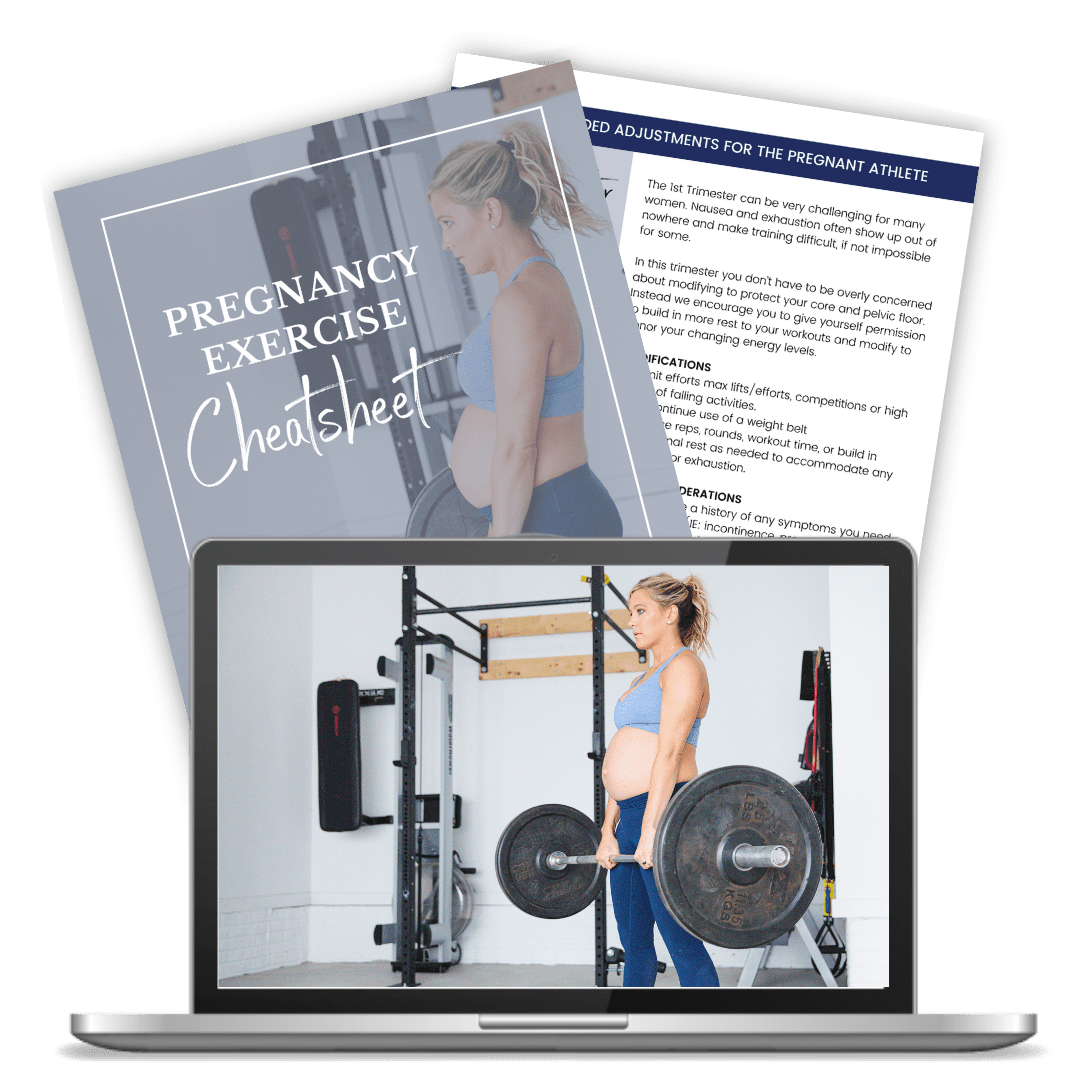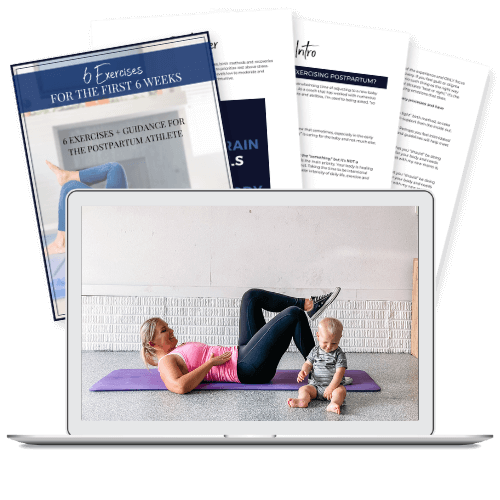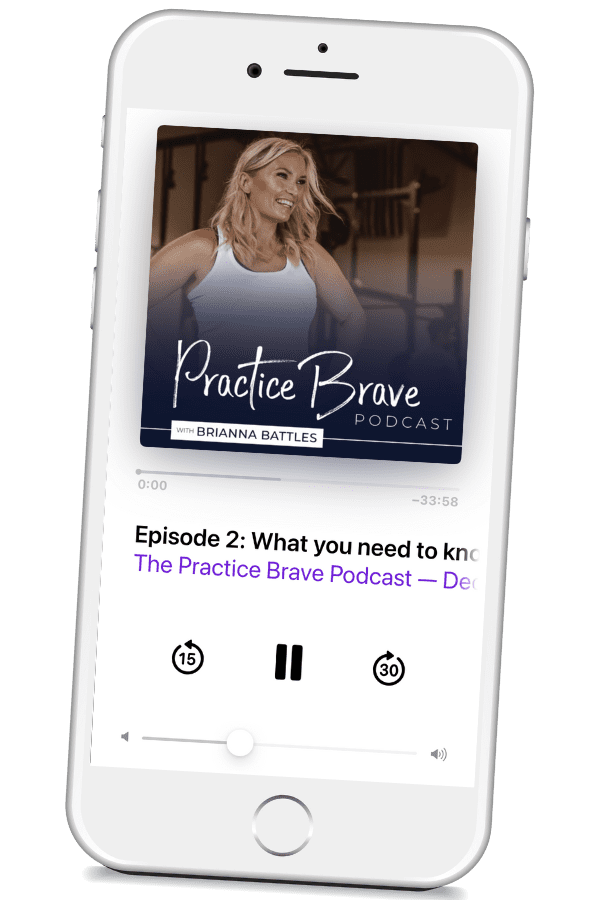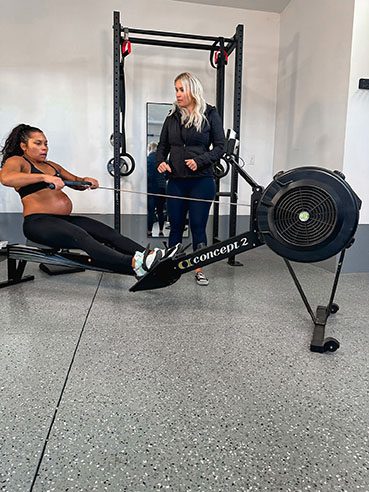
More and more pregnant women are choosing to continue their athletic endeavors in the gym. These athletes deserve quality coaching and better guidance than the all or nothing approach that has permeated the prenatal fitness space of days past. As a coach, learning the how to of training pregnant women effectively is important in order to be able to help them navigate through this phase of their athleticism and help to set them up for a better return to fitness postpartum.
1. “Listen to your body” isn’t the best advice.
Pregnancy can be such a confusing time for an athlete. You come from a place of understanding and knowing your body to one where your body is rapidly changing in ways that you may or may not have ever experienced before. When it comes to training pregnant women, telling them to just “listen to your body” can be hard for them to interpret.
Is it normal to have pain in a particular lift, leaking when running, and why does their pelvis feel like it’s on fire when they lunge? These are common concerns that your pregnant athletes may face. Instead of limiting them in their movements or giving generic “do what feels good” advice, you should be able to give your athlete modifications for load, volume, and exercise selection based on their needs and refer out to the appropriate professionals when needed.
This free e-book covers the adjustments you can make in each trimester of pregnancy:
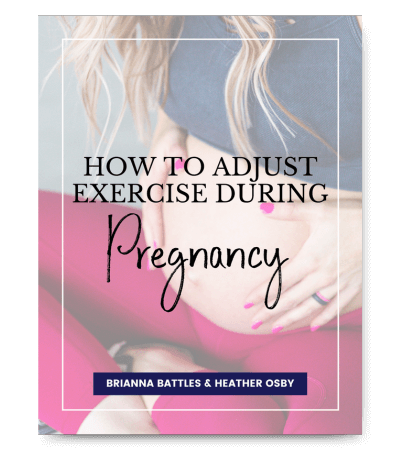
2. You can build muscle during pregnancy, but that’s not the goal.
PRs are possible during pregnancy, but you shouldn’t be chasing them. Just because something isn’t “heavy” for your athlete doesn’t mean it’s not heavy for their pelvic floor. For training pregnant women, it’s important to take the natural increased load and pressure on their pelvic floor into consideration when making weight and exercise selections.
Instead of trying to build strength or train for birth, pregnancy should be a time for maintaining strength and preparing your athlete for a better return to exercise postpartum. Pregnancy is also an ideal time to work on technique which can help make for better athletic performance. Working on mobility, accessory drills, unilateral training, and slowing down the tempo can all help to maintain strength during pregnancy and improve your technique for postpartum.
3. Know your pregnant athlete’s tendencies for their core and pelvic floor
You know the importance of form and movement for the knees, hips, and shoulders, but do you know about the importance of the core and pelvic floor for your pregnant athlete?
During pregnancy, it’s not just about modifying ab or impact exercises, although that’s a great start. How your athlete is moving is oftentimes more important than what movement they’re choosing to do. In order to understand how your athlete is moving, you need to assess your athlete’s tendencies for tension, pressure, and position within movement.
You need to understand how much tension your athlete generates normally, plus how much they generate in their lifts. Ex: Do they constantly grip their glutes, clench their jaw, or suck in their abs throughout the day? Do they then squeeze their glutes at the top of a deadlift or maintain a kegel while jumping?
How your athlete manages intra abdominal pressure is also important. Are they breath holding, pushing out into their midline, or bearing down into their pelvic floor? By paying attention to these tendencies, you can give your athlete alternate strategies to help them reduce pressure. One of the easiest ways to help reduce intra abdominal pressure is through breathing strategies like “breathing into your lats” or “exhaling through the movement or on exertion.”
Proper breathing and bracing, pressure reduction, small form shifts, and reducing tension on the midline and pelvic floor will have the greatest impact on your athlete’s core and pelvic floor and help them to reduce their risk of incontinence, pelvic organ prolapse, and diastasis recti.

Watch this video on bracing here.
4. Weighing risk vs reward for the developing fetus isn’t enough. We need to think long term for the pregnant athlete as well.
Whether you realize it or not, you’re weighing risk vs reward on a regular basis. This is especially true in regards to training during pregnancy. Many guidelines weigh the risk of the developing fetus vs the training methods, which is absolutely important but not the only thing you should consider.
Your pregnant athlete is important too. Their core and pelvic floor, their ability to reduce their risk for disorders, and their long term athleticism and training goals are also very important factors to consider when weighing risk.
In order to appropriately weigh risk vs reward with movement, your athlete first needs to be educated on potential impacts in an informative, not judgemental, way. Only then can they decide if a movement or training method is worth it for them to continue during their pregnancy or if a pause for a few months might be more beneficial long term.
It’s not always black and white. It’s also not always do or don’t do. There are a vast variety of movement modifications and pressure management strategies you can do to help your athlete reduce their risk without removing a movement completely.
More and more women define themselves as athletes and continue to pursue fitness as they expand their families. There is a huge need for coaches who understand training pregnant women. Learn how to coach your client to maintain strength, protect their core and pelvic floor, and return to exercise postpartum in our FREE mini course – an Introduction to Coaching Pregnant and Postpartum Athletes.
Read More: Core and Pelvic Floor Basics

